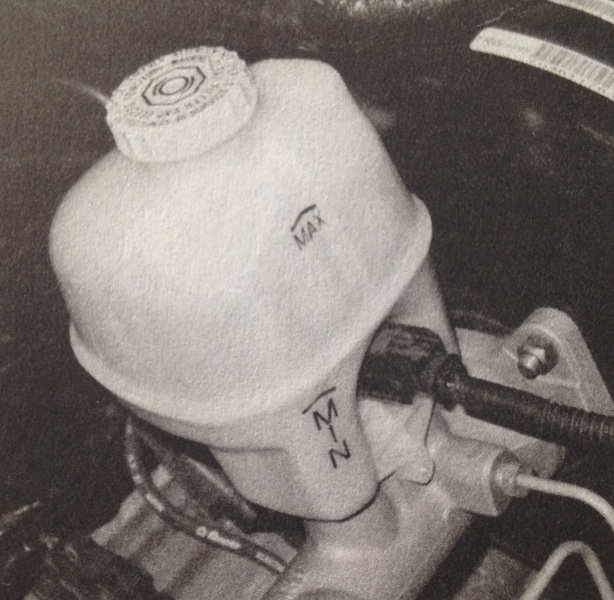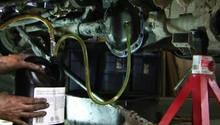Dodge Ram 2009-Present: How to Replace Brake Fluid
So you've changed out your pads and rotors but still aren't happy with how your vehicle feels. You might need to change the brake fluid! Learn how to do so here.
This article applies to the Dodge Ram (2009-present).
It is recommended changing out the brake fluid in these trucks every 30,000 miles or 24 months. This maintenance item is regularly overlooked. The problem with brake fluid is that it's hygroscopic, which means that it absorbs water. This affects the brake fluid by lowering the boiling point. This can also cause the fluid to be less effective when under pressure. This often will lead to people changing their pads and rotors thinking this will cure the issue, but still being left with a pedal that doesn't give you the confidence that you're looking for. So how do you get your pedal feel back? The answer is simple: change out your brake fluid! It's not as difficult as it may seem, and you can perform this procedure with very few tools.

Materials Needed
- Turkey baster or hand suction pump
- Millimeter wrench sizes 8mm-13mm
- Brake bleeder or willing assistant
- Rags
- DOT 3 or 4 brake fluid
This procedure is fairly simple and has very few steps. The bleeding of the brake system to pull the new fluid through is the most difficult part. There are a few power bleeders out there that you can purchase to perform the job on your own. If you don't have access to one of these, then you will need someone to apply pressure to the system through the brake pedal. Keep this in mind when planning the service out.
Step 1 – Remove old fluid
The brake master cylinder reservoir is located in the top right-hand corner of the engine compartment. Remove the cap and, using your hand suction pump or turkey baster, suck out the old fluid completely from the reservoir. Make sure to dispose of the old fluid legally.

Figure 1. Item 7 is the brake master cylinder reservoir. 
Figure 2. Remove old fluid.
Step 2 – Add new fluid
Now take your new, fresh brake fluid and fill the master cylinder until it touches the base of the filler neck. This will be above the max line on the master cylinder. Don't worry, you're going to be sucking that fluid through the system, so the level will drop.

Step 3 – Bleed brake system
This is the important part. Bleeding the brake system will allow you to draw in the new fluid and also to extract the old fluid. When bleeding your brake system, you should always start at the wheel farthest away from the master cylinder. So in this case you would start at the Right rear wheel first, then move to the left rear, then right front, and finally end on the left front. When performing the bleeding of the brakes and drawing in the new fluid, pay extra attention to the level of the brake fluid in the master cylinder reservoir. You never want it to drop below the minimum line as this will possibly draw air into the system, forcing you to start the bleeding process all over again.
Outlined below is a manual bleeding process. If you have a power bleeder, the process might change slightly based on how exactly your power bleeder operates.
Bleed brakes as follows:
- Remove residual vacuum (or hydraulic pressure) by applying the brakes several times with engine off.
- Remove cap and top off reservoir if necessary.
- Place tube of catch can over bleeder valve on wheel that you are going to be bleeding. Start with farthest corner from master cylinder first and work your way to the closest.
- Have assistant slowly depress and hold it in the depressed position.
- Open the bleeder screw enough to allow a flow of fluid to leave the valve. While doing this, keep an eye on the fluid being removed. It will be a dark color.
- Tighten bleeder screw.
- Have assistant release pedal.
- Repeat steps 4-7 until you see fresh, lighter colored fluid coming out of the bleeder screw tube.

Step 4 – New brake fluid
After you have completely bled the brake system, go back and check the level of the fluid in the reservoir and top it off to the MAX line.

Related Discussion
- Dirty Brake Fluid - Dodgeforum.com






